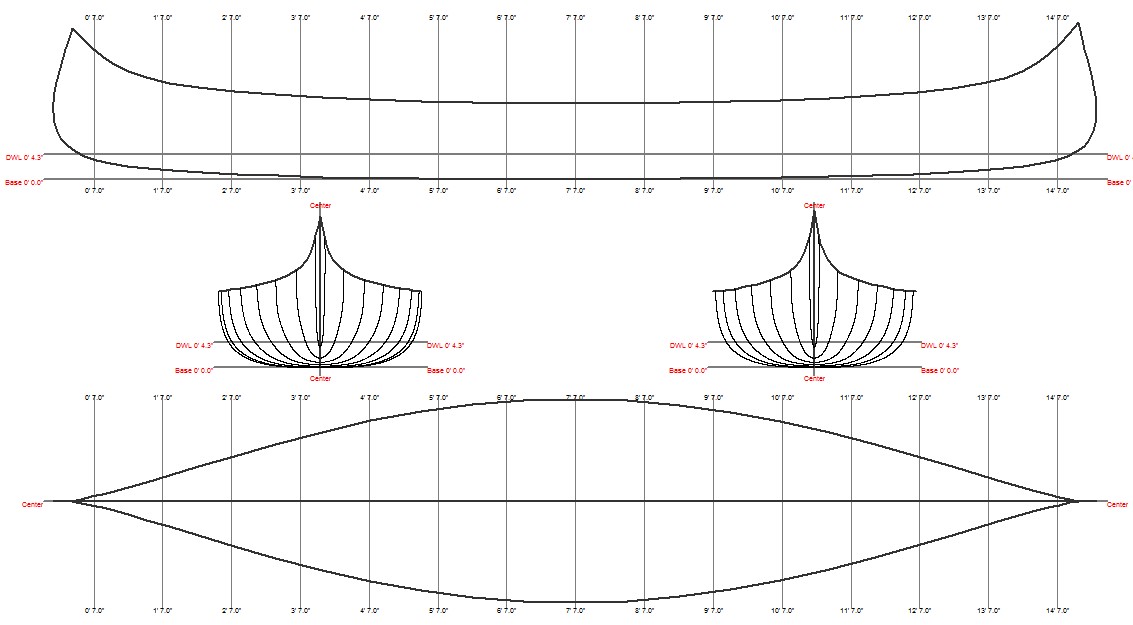|
Basic Surface Modeling - Kayaks and Canoes |
|
|---|---|
| Screenshot |

|
| Using a set of standard 2D hull construction drawings, students will construct a 3d model of a canoe. This task will require the use of 3-dimensional translation, precise geometric positioning and orientation, and the use of construction geometry to produce high-level forms. Students will be provided with a vector-format representation of the hull contours, and will be expected to produce a complete surface model (as a minimum) in the time allotted. | |
| Assessment objectives |
Fluency in basic surfacing modeling will be reflected in students' ability to:
|
| Exercise Type | Problem Set |
| Evaluation Criteria |
|
| Uses Tool(s) | Tool:Rhino v4.x , Tool:Rhino OSX v5.x |
| Uses Workflow(s) | Workflow:555376 |
Using the drawing pictured below, digitally recreate (using Rhino3d) the Canoe with NURBS surfaces. Be as precise as possible, using the short contours of the hull to properly modelthe hull. The hull itself should be "watertight" - meaning there are no holes and all edges on the exterior surfaces are touching. Additional elements, such as exterior piping and seats, can be added afterwards. See drawings for details on dimensions and placement. Hull surface should be offset by 1/8" to represent material thickness.
Rhino files (.3dm, Rhino4 or earlier) should be submitted by 8 pm Sunday July 8th via email to madelinehartzell@gmail.com.
Material Provided
Hull geometry drawings of kayaks and canoes abound on the internet - any one of which would make an acceptable basis for this exercise. Ideally, these plans should include a multi-view representation of contour lines of the hull, and little other information (such as planking or decking). The image below is representative of the kind of geometric information you can expect, but the specifics will vary.
Note: the short sections are cut one foot apart. Please use this as a reference for when scaling the image in Rhino.
